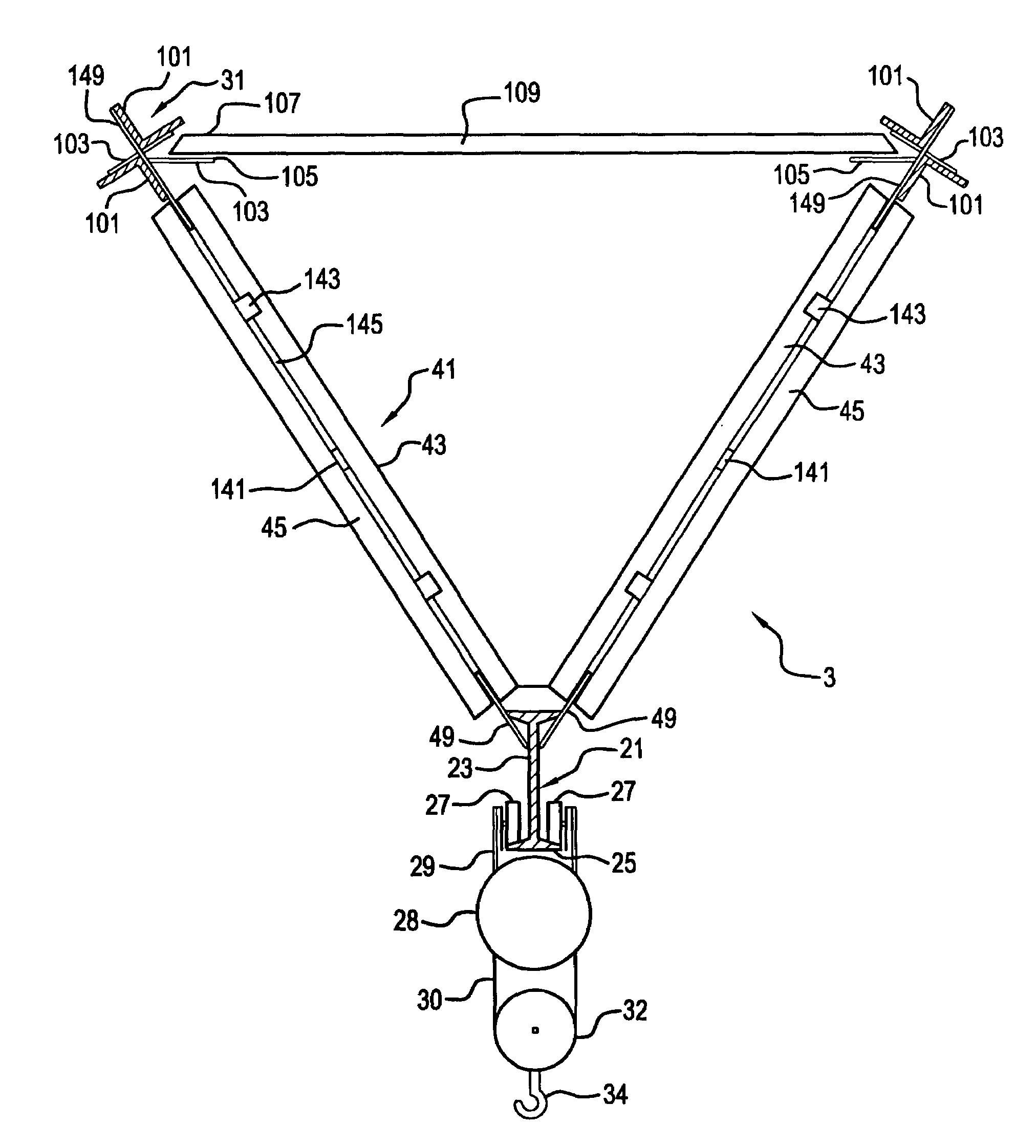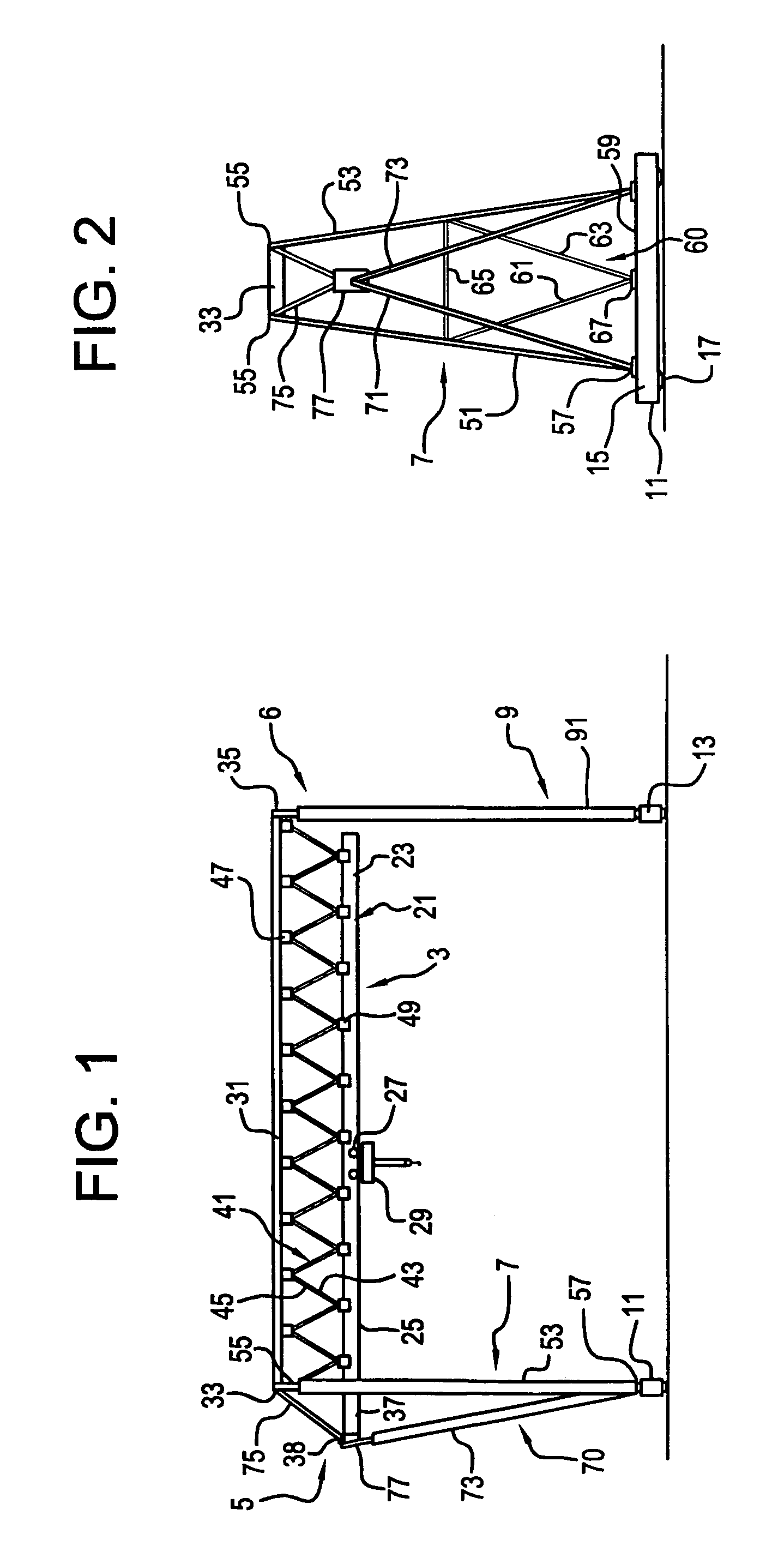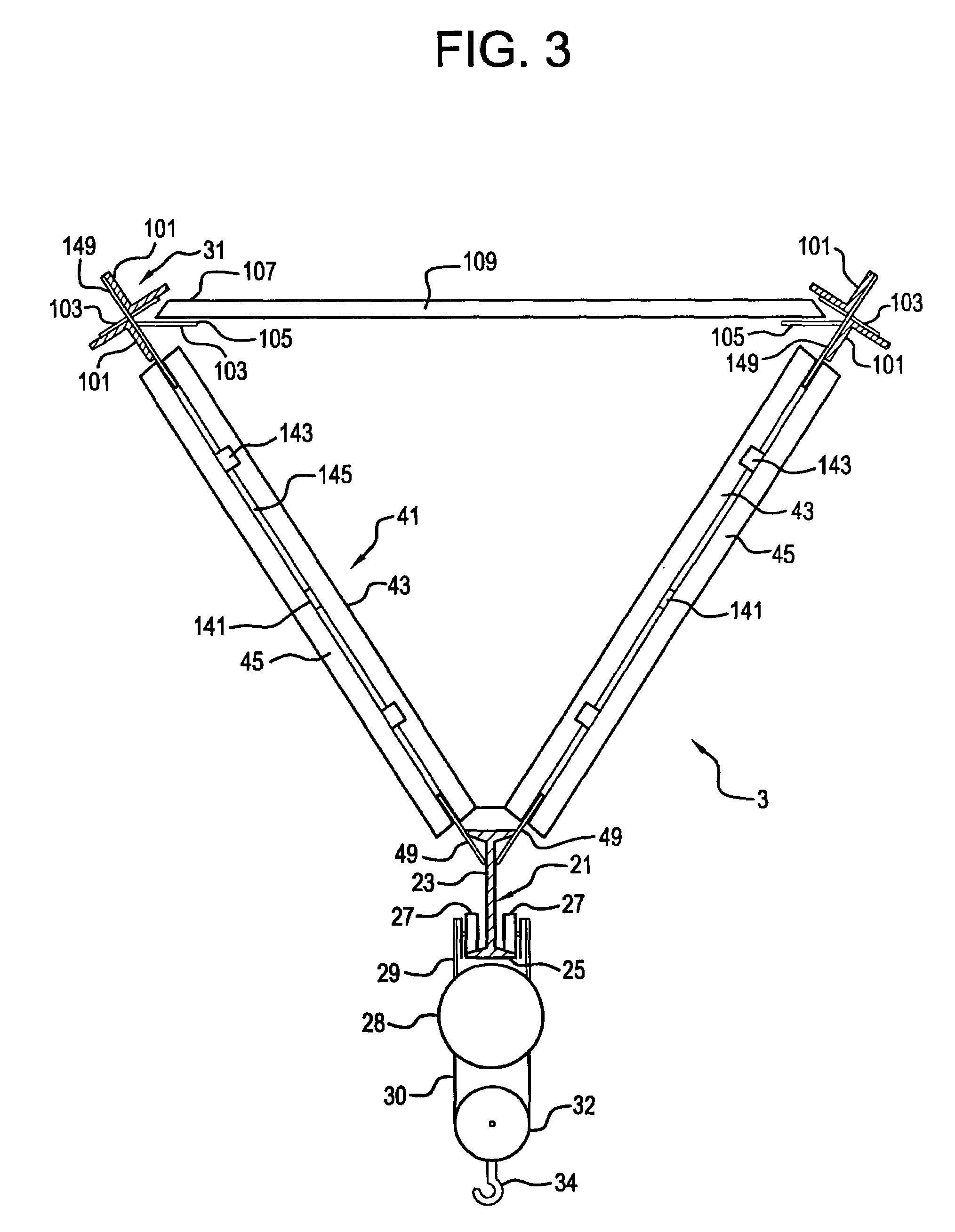Gantry crane
a crane and gantry technology, applied in cranes, braking devices for hoisting equipment, railway tracks, etc., can solve the problem that the top of the legs provide limited flexibility for accommodating the floor, and achieve the effect of easy erection
- Summary
- Abstract
- Description
- Claims
- Application Information
AI Technical Summary
Benefits of technology
Problems solved by technology
Method used
Image
Examples
Embodiment Construction
[0034]The gantry crane of the invention is generally indicated by the numeral 1. The gantry crane has an upper open truss three-dimensional cross-beam generally referred to by the numeral 3. The beam 3 is supported rigidly at a first end 5 by a rigid leg structure 7. A second end 6 of beam 3 is supported by vertical support legs 9. Carriages 11 and 13 are connected to the bottoms of rigid support legs 7 and to the bottoms of vertical support legs 9, respectively. The carriages have axles 15 and wheels 17, at least some of which are driven, preferably by synchronous motors, frequency motors or stepping motors to assure that the carriages move together when on tracks. Because of the unique construction, if one motor fails, the remaining motor or motors may move the crane successfully.
[0035]The three-dimensional open beam 3 has a lower member 21, which is preferably an I-beam with a vertical web 23 and lower oppositely extending flanges 25, on which wheels 27 of a trolley 29 ride. Beam...
PUM
 Login to View More
Login to View More Abstract
Description
Claims
Application Information
 Login to View More
Login to View More - R&D
- Intellectual Property
- Life Sciences
- Materials
- Tech Scout
- Unparalleled Data Quality
- Higher Quality Content
- 60% Fewer Hallucinations
Browse by: Latest US Patents, China's latest patents, Technical Efficacy Thesaurus, Application Domain, Technology Topic, Popular Technical Reports.
© 2025 PatSnap. All rights reserved.Legal|Privacy policy|Modern Slavery Act Transparency Statement|Sitemap|About US| Contact US: help@patsnap.com



